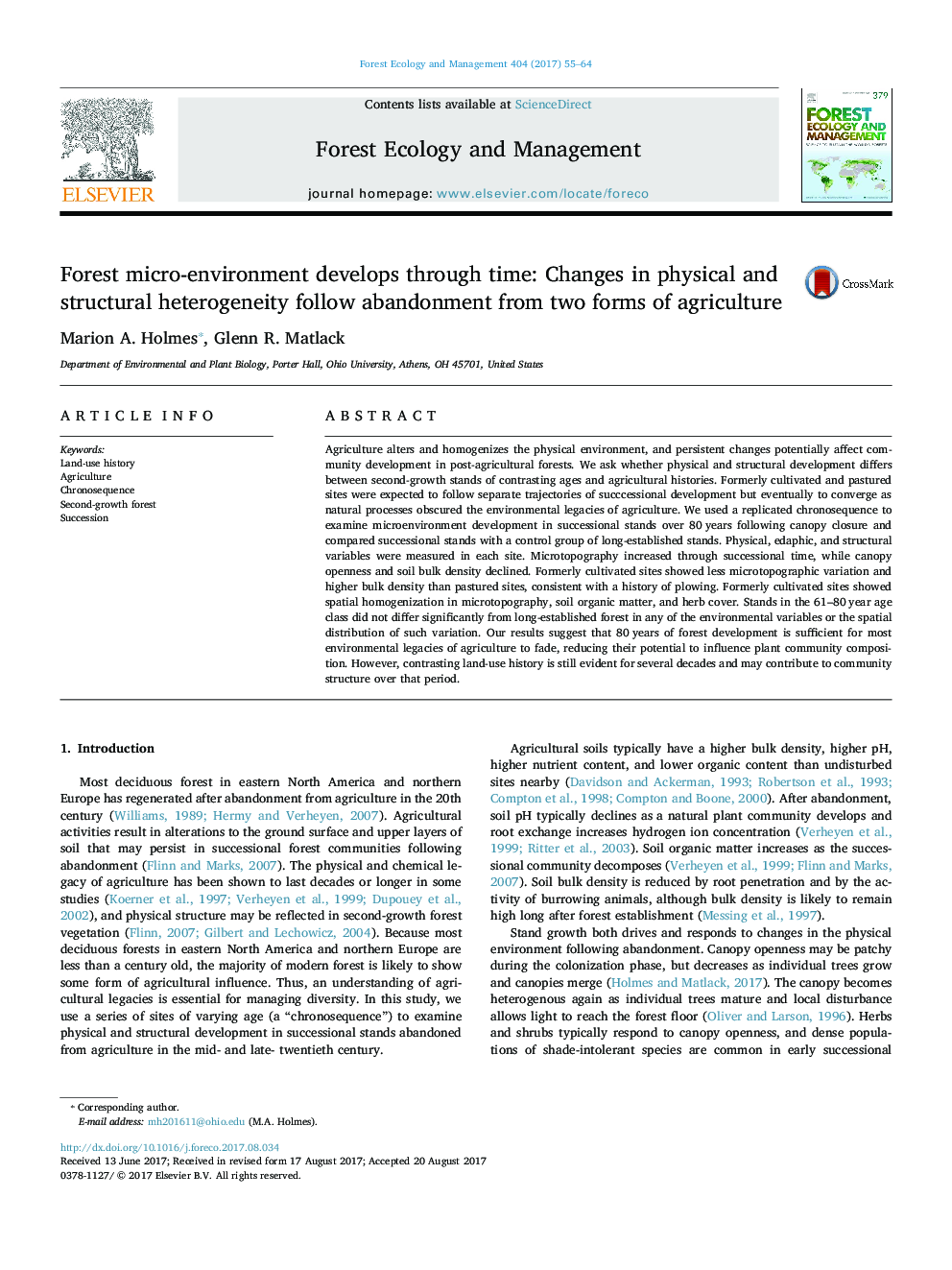| کد مقاله | کد نشریه | سال انتشار | مقاله انگلیسی | نسخه تمام متن |
|---|---|---|---|---|
| 6459139 | 1421354 | 2017 | 10 صفحه PDF | دانلود رایگان |
- Environmental change in formerly plowed and pastured stands is compared through time.
- Successional forest environment approximates long-established forest after <80Â years.
- Surface microtopography reduced and bulk density higher in plowed than pastured sites.
- Spatial homogenization stronger in formerly cultivated than pastured forest stands.
Agriculture alters and homogenizes the physical environment, and persistent changes potentially affect community development in post-agricultural forests. We ask whether physical and structural development differs between second-growth stands of contrasting ages and agricultural histories. Formerly cultivated and pastured sites were expected to follow separate trajectories of succcessional development but eventually to converge as natural processes obscured the environmental legacies of agriculture. We used a replicated chronosequence to examine microenvironment development in successional stands over 80Â years following canopy closure and compared successional stands with a control group of long-established stands. Physical, edaphic, and structural variables were measured in each site. Microtopography increased through successional time, while canopy openness and soil bulk density declined. Formerly cultivated sites showed less microtopographic variation and higher bulk density than pastured sites, consistent with a history of plowing. Formerly cultivated sites showed spatial homogenization in microtopography, soil organic matter, and herb cover. Stands in the 61-80Â year age class did not differ significantly from long-established forest in any of the environmental variables or the spatial distribution of such variation. Our results suggest that 80Â years of forest development is sufficient for most environmental legacies of agriculture to fade, reducing their potential to influence plant community composition. However, contrasting land-use history is still evident for several decades and may contribute to community structure over that period.
Journal: Forest Ecology and Management - Volume 404, 15 November 2017, Pages 55-64
